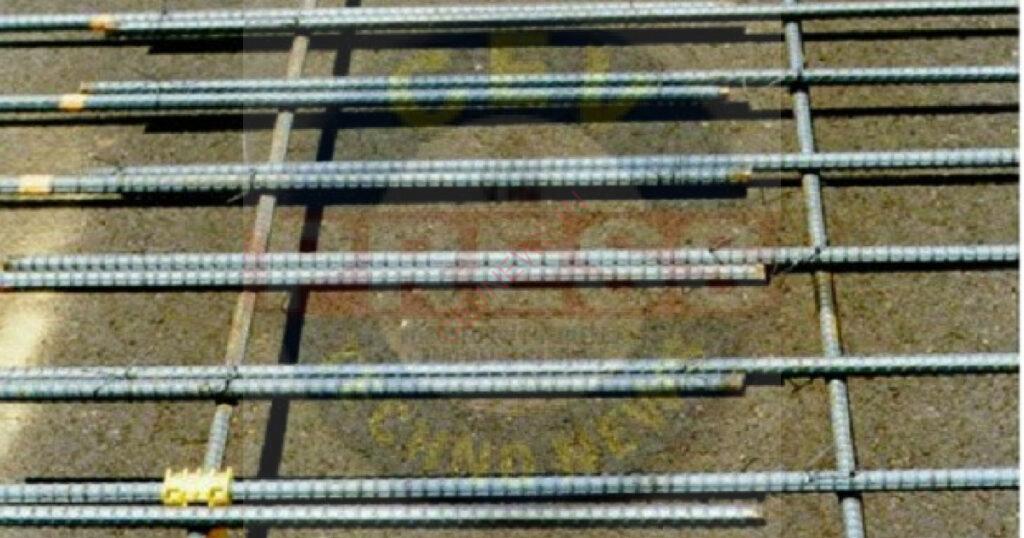MEANING, IMPORTANCE AND FORMULA OF DEVELOPMENT LENGTH
The primary purpose of lap length and development length, anchorage length, is to provide sufficient bond strength between reinforcement and concrete but in different situations. Development length depends upon the grade of concrete mix, reinforcement grade and diameter.
Development Length:
A development length can be defined as the amount of reinforcement(bar) length needed to be embedded or projected into the column to establish the desired bond strength between the concrete and steel (or any other two types of material). It is required to provide an additional length of reinforcement on either side of the point of the maximum stress zone so that the reinforcement bar doesn’t slip as it approaches the ultimate stress known as Development length. Under tension, it is called Development length in tension, and Similarly, we have to provide an extra length known as development length in compression for compression members. Furthermore, it is worth mentioning that due to the presence of ribs, deformed bars are superior compare to the smooth, mild steel bars.
Reason for providing Development length
- To develop a safe bond between the bar surface & the concrete so that no failure due to slippage of bar occurs during the ultimate load conditions.
- Also, the extra length of the bar provided as development length is responsible for transferring the stresses developed in any section to the adjoining sections (such as at column beam junction the extra length of bars provided from beam to column).
Importance and Purpose of Development Length:
- It is necessary and essential to provide a sufficient bond between reinforcement steel and concrete to act together without any slip.
- Help to complete stress transfer to maintain the structure’s integrity and enable it to carry the loads.
- The plane section of a structural beam remains plane even after bending by giving a perfect bond between them. The required length of the reinforcement bar to develop the entire bond is known as anchorage length.
- Development length becomes highly essential when such design involves the curtailment of reinforcement steel.
- It is crucial to check lap length and development length for structural stability, including tension reinforcement for continuous beams and cantilever supports.
Development Length Calculation:
- The plane section of a structural beam remains plane even after bending by giving a perfect bond between them. Here bond is estimated by bond stress, and depending on the bending moment, local bond stress varies along with the member. The average bond stress value is calculated throughout its anchorage length for further calculations.
- The bond stress is designated as the shear force per unit nominal surface area of the reinforcing steel. Shear force is acting on the interface between reinforcement and surrounding concrete and parallel to the reinforcement bars.
- An additional length of reinforcement of specified diameter to be provided beyond a given critical section after considering the design bond stress. Though this provision of additional development length may avoid the overall bond failure, slippage of a bar may not always result in the widespread failure of the beam.
The formula for Development Length:
Development length (Ld) = d x σs/4τbd
n the Formula for Development Length, d is for the diameter of the reinforcement bar, σs stress in the bar at the section considered as design load, and τbd is for design bond stress.
- The formula for Development Length includes anchorage values for hooks in tension reinforcement.
- For bars of sections other than circular, the development length should be sufficient to develop the stress in the rebar by bond.
- Design bond stress(τbd) in Limit State Method: As per IS 456:2000, Design bond stress(τbd) in Limit State Method for plain bars and deformed bars under tension shall be as follows:
| Grade of concrete | M20 | M25 | M30 | M35 | M40 & Above |
| Design bond stress for plain bars, Tbd N/mm2 | 1.2 | 1.4 | 1.5 | 1.7 | 1.9 |
| Design bond stress for deformed bars, Tbd N/mm2 | 1.92 | 2.24 | 2.40 | 2.72 | 3.04 |
- Design bond stress(τbd) in Working Stress Method: As per IS 456:2000, Design bond stress(τbd) in Working Stress Method for plain bars and deformed bars under tension shall be as follows:
| Grade of concrete | M20 | M25 | M30 | M35 | M40 | M45 | M50 |
| Design bond stress for plain bars, Tbd N/mm2 | 0.8 | 0.9 | 1.0 | 1.1 | 1.2 | 1.3 | 1.4 |
| Design bond stress for deformed bars, Tbd N/mm2 | 1.28 | 1.44 | 1.6 | 1.76 | 1.92 | 2.08 | 2.24 |
Development Length for Bundle Bars:
In the case of bundle bars, the respective development lengths of each of the rebars for two, three or four rebars in contact are as follows.
- The development length(Ld) of each bar of bundled bars shall be that for the individual bar
- Increased by 10% for two bars in contact
- Raised by 20% for three bars in contact
- Increased by 33% for four bars in contact.

